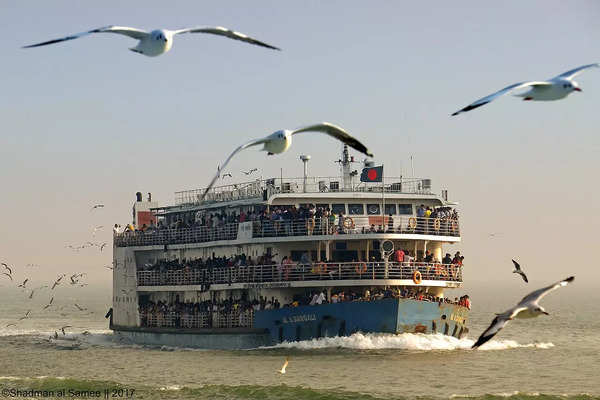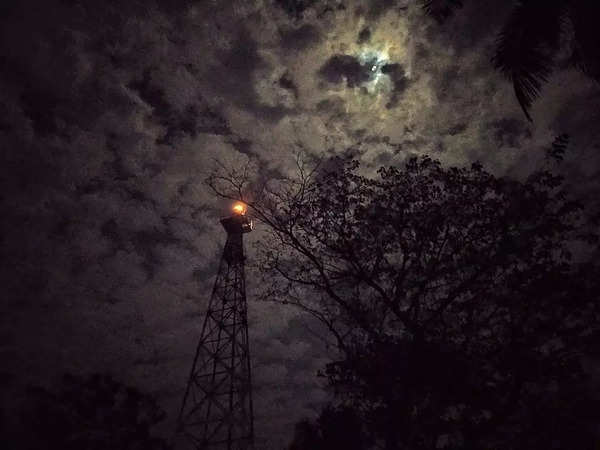St. Martin’s Island, a small landmass of just 3 square kilometers, is located in the northeastern Bay of Bengal, about 9 kilometers south of the Cox’s Bazar-Teknaf Peninsula. Bangladesh.
Earlier, Hasina had also accused the US of trying to bring about regime change in Bangladesh during a parliamentary session. His son, Sajeeb Wased Joy, has suggested that the recent protests in Bangladesh may have been instigated by a foreign intelligence agency, though he refrained from naming the US overtly. He said, „I am now convinced that this was instigated by a small group, mostly by a foreign intelligence agency. I strongly suspect the ISI. There is no reason for the protests to continue as the quotas allotted by our government were not made mandatory. Our government removed the quotas when the quota protests took place since 2018. The US Govt. It continues to criticize Dhaka’s human rights record and electoral processes.
What is the significance of the island of St. Martin?

A ship departing from the island of St. Martin
With an area of just three square kilometers, the island is home to about 3,700 residents, who are primarily engaged in fishing, rice cultivation, coconut farming and seaweed harvesting, which is dried and exported to Myanmar.
Recently, the island has attracted attention due to the Bangladesh Nationalist Party (BNP) allegations (BNP), led by former Prime Minister Khaleda Zia (recently released), had planned to sell it to the US for a military base in exchange for electoral support. However, the US State Department rejected these claims, affirming its commitment to respecting Bangladesh’s sovereignty and promoting democracy through free and fair elections.
History
Known in Bengali as 'Narikel Jinchira’ or Coconut Island, St. Martin’s Island is also referred to as 'Darusini Twip’ or Cinnamon Island due to its abundance of coconut trees. The island was originally part of the Teknaf Peninsula, but was separated when part of the peninsula was submerged, turning the southern part into an island.
The island, named 'Jazira’, has a rich history dating back to the 18th century when it was first settled by Arab traders. In 1900, the British Land Survey included the island of St. Martin as part of British India, named after a Christian priest named St. Martin. Some reports suggest that the island was named after the then Deputy Commissioner of Chittagong, Mr Martin.
In 1937, when Myanmar was separated from British India, the island remained a part of India. Following the 1947 partition, it came under the control of Pakistan and later became part of Bangladesh after the 1971 Liberation War. In 1974, Bangladesh and Myanmar reached an agreement confirming the island as Bangladeshi territory.
Sea fight with Myanmar
Despite an agreement in 1974 to recognize the island of St. Martin as part of Bangladesh, problems persist in demarcating the maritime boundary. Bangladeshi fishermen, who use the island as a major fishing hub, faced barrages and warnings from the Myanmar navy. Although the island’s ownership is not disputed, the demarcation of the maritime boundary has created tensions, given the island’s strategic location near the Bay of Bengal.
In 2012, the International Tribunal for the Law of the Sea (ITLOS) issued a landmark judgment confirming Bangladesh’s sovereignty over the island. The ruling had significant implications for Bangladesh’s territorial waters and its Exclusive Economic Zone (EEZ).
Infiltration of Rohingyas in Bangladesh
A violent military crackdown in Myanmar in 2017 forced more than 700,000 Rohingya Muslims to flee to neighboring Bangladesh, with many taking refuge in the Kutupalong camp in Cox’s Bazar, the world’s largest refugee camp. Due to its proximity to the island of St. Martin, there have been reports that the Arakan Army, a group banned by Myanmar, has tried to claim the island, although Bangladesh continues to deny these claims.
Sporadic firefights between Myanmar’s military junta and Arakan’s military have occurred in recent years, prompting the Bangladeshi navy to station warships around the island of St. Martin.

Lighthouse of St. Martin Island
US-China conflict
The island of St. Martin has played a significant role in the politics of Bangladesh since its independence in 1971. Its strategic location near the Bay of Bengal and its maritime border with Myanmar have attracted international interest, particularly from the US and China, both of which are seeking to strengthen their presence. in the region.
In June last year, Prime Minister Sheikh Hasina accused the US of taking over the island of St Martin to build a military base in exchange for the BNP’s election victory. He said the BNP, if brought to power, would sell the island to the US, a promise he would never allow while in office.
His allegations were vehemently denied by US State Department spokesman Matthew Miller, who said the claims were „not accurate” and confirmed that „no discussions” had taken place with the Bangladeshi government about taking over the island.
with inputs from agencies

. „Gracz. Namiętny pionier w mediach społecznościowych. Wielokrotnie nagradzany miłośnik muzyki. Rozrabiacz”.
